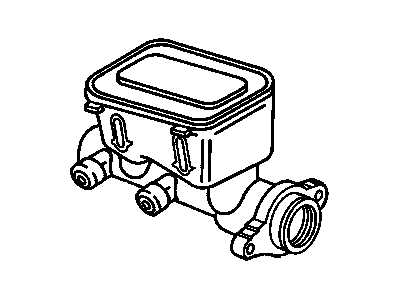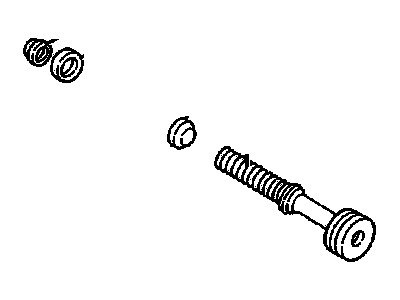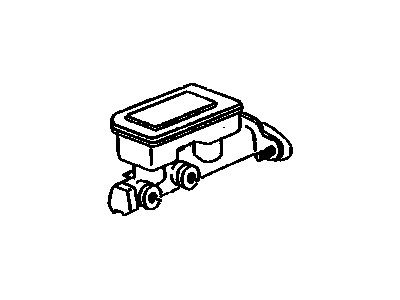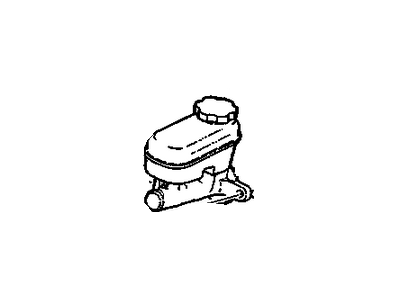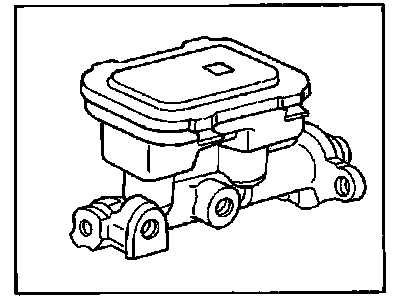
My Garage
My Account
Cart
Genuine Chevrolet S10 Brake Master Cylinder
- Select Vehicle by Model
- Select Vehicle by VIN
Select Vehicle by Model
orMake
Model
Year
Select Vehicle by VIN
For the most accurate results, select vehicle by your VIN (Vehicle Identification Number).
9 Brake Master Cylinders found
Chevrolet S10 Brake Master Cylinder
Brake Master Cylinder is one of the most important part of Chevrolet S10 vehicles braking system which worked as foot to hydraulic pressure to control slave cylinder. This system makes use of pistons in order to pump fluid hence in enabling operation of calipers or drum brakes in order to bring stop the wheels. It has a dual circuit master cylinder with two pistons which provides power brake boost and back up brake boost in case of hydraulic failure usually found in Chevrolet S10 vehicles. They constantly necessitate servicing due to the formation of leaks, corrosion, and internal breakages that could affect the braking systems. All in all, the Brake Master Cylinder makes a very crucial contribution to the safe running of Chevrolet S10 vehicles' brakes system.
Each OEM Chevrolet S10 Brake Master Cylinder we offer is competitively priced and comes with the assurance of the manufacturer's warranty for the part. Furthermore, we guarantee the speedy delivery of your orders right to your doorstep. Our hassle-free return policy is also in place for your peace of mind.
Chevrolet S10 Brake Master Cylinder Parts Questions & Experts Answers
- Q: How to remove the brake master cylinder on Chevrolet S10?A:To remove the brake master cylinder, start by placing rags under the brake line fittings and preparing caps or plastic bags to cover the ends of the lines once they're disconnected. Then, use a flare-nut wrench to loosen the tube nuts at the ends of the brake lines where they enter the brake master cylinder. Pull the brake lines away slightly and plug the ends to prevent contamination. If the vehicle has a Rear-Wheel Anti-Lock (RWAL) brake system, remove the RWAL module. Remove the two brake master cylinder mounting nuts and set aside the bracket for the RWAL module and isolation/dump valve. Remove the brake master cylinder from the vehicle and discard any remaining fluid in the reservoir. To overhaul the brake master cylinder, mount it in a padded vise and remove the primary piston lock ring. Take out the primary and secondary piston assemblies from the cylinder bore, and remove the reservoir and grommets. Do not attempt to remove the quick take-up valve. Inspect the cylinder bore for damage and replace if necessary. Lubricate and install new reservoir grommets, then press the brake master cylinder body onto the reservoir. Install new secondary seals on the second piston assembly. For installation, attach the spring seat to the secondary piston assembly and install the primary piston assembly in the cylinder bore. Inspect and replace any damaged reservoir cover and diaphragm. Bench bleed the brake master cylinder by filling it with brake fluid and holding your fingers tightly over the holes where the brake lines normally connect. Stroke the piston several times to expel air. Carefully install the brake master cylinder by reversing the removal steps and bleed the brake system.
Related Chevrolet S10 Parts
Browse by Year
2003 Brake Master Cylinder 2002 Brake Master Cylinder 2001 Brake Master Cylinder 2000 Brake Master Cylinder 1999 Brake Master Cylinder 1997 Brake Master Cylinder 1996 Brake Master Cylinder 1995 Brake Master Cylinder 1994 Brake Master Cylinder 1993 Brake Master Cylinder 1992 Brake Master Cylinder 1991 Brake Master Cylinder 1990 Brake Master Cylinder 1989 Brake Master Cylinder 1988 Brake Master Cylinder 1987 Brake Master Cylinder 1986 Brake Master Cylinder 1985 Brake Master Cylinder 1984 Brake Master Cylinder 1983 Brake Master Cylinder 1982 Brake Master Cylinder

